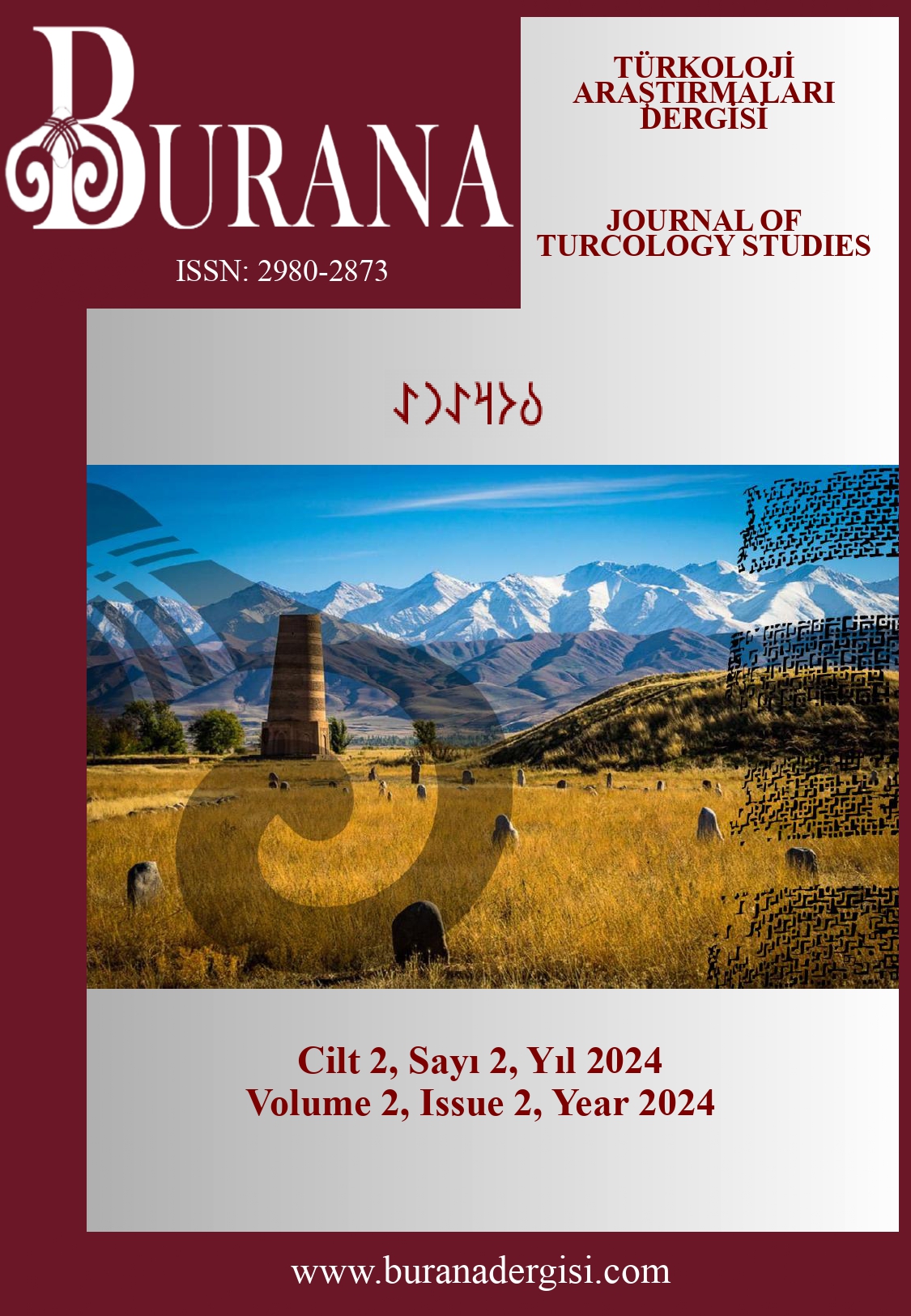Persian Hajj Itineraries of the Safavid Period in the Regions of Iran, Mawaraunnahr and Northern India
DOI:
https://doi.org/10.5281/zenodo.14567833Keywords:
Hajj, Travelogue, Iran, India, Transoxiana.Abstract
In Safavid period (907-1148/1501-1732) literature, the travelogue writing genre known as Sefernâme developed literature with its verse and prose forms. Among these works, writings about pilgrimages were mostly written in verse in the early periods. Some of the Hajj itineraries have come down to the present day by being created as self-contained tractates, while others have been penned as a sub-chapter of the author's related work.Most of them were written with the aim of increasing the enthusiasm for traveling to the holy land, while some of them were written with the goal of guidance on the conduct of the pilgrimage.Some of them are motivated by a scientific purpose, such as introducing the Hijaz and the roads leading to the Hijaz.Some of them were written with national, religious and political motives, such as informing their compatriots and fellows adherent to the same sect about the dangers on the roads by conveying the authors' personal experiences of travel.In some of these works, expenses and accounts made on the way back and forth for hajj candidates who intend to travel to the holy land were kept. Muslims who lived in the wide geography called Greater Khorasan, covering Iran, Turkestan and Khwarezm regions, and who spoke and wrote Persian generally gave the works they wrote in this field nâmes such as Tuhfet’ul Harameyn, Sefernâme-i Mecca, Hacnâme, Sefernâme-i Hac. When these works written by Sunni and Shiite sects of Turkish, Indian and Persian origin are examined, it is seen that they are similar literary products written in different geographies. On the other hand, it is understood that all of these works are a continuation of the pilgrimage literature produced in Iran and the Indian basin and the tradition of Menâzil and Menâsik produced in Turkish in Anatolia.
References
Bastanparizî, M. İ. (Ed). (1369). Tezkire-i Safevîyye-i Kirman, Mir Muhammed Said Meşizî. Neşr-i İlm.
Câferiyan, R. (1374). Rasul sefernâme-i manzum-i hac, Bânuy-i İsfahânî. ez Dovrey-i Safevî. Neşr-i Meşar.
Caferiyân, R. (1379). Safevîyye der arse-i din, ferheng ve siyaset, (hatırat -i Sefer-i Muhammed Taki Meclisi). İntişârât Delil Ma.
Câferiyan, R. (1382). Durer’u’l-mensûr min el-me’sûr ve gayri’l-me’sûr, makalat-i tarih-i defter-i devazdehom. İntişârât-i Delil Ma.
Caferiyân, R. (1386). Manzum-i hac. İntişârât-i Sazıman-ı Coğrafya.
Câferiyan, R. (1387). Do kaside ve terkib-i bend der sitayiş-i hac ez ruzigar-i Safevî, Muhammed Bakır Halil Kaşî. Mikat-i Hac, 25(98), 100-116.
Caferiyân, R. (1390a). Hacnâme, Allahyâr Sûfi Nakşibendî Semerkandî. Rasul C. (Ed.), Şanzdeh Sefernâme-i Hac (Safevî ve Gâcariy-i diger) (s. 121-155). Neşr-i Müverrih.
Caferiyân, R. (1390b). Risâle der Zira’i Mekke-i Muazzama ve Bazi ez Keyfiyyatı-i Mescidi’l Haram. Rasul C. (Ed.), Şanzdeh Sefernâme-i Hac (Safevî ve Gâcariy-i Diger) (s. 9-29). Neşr-i Müverrih.
Caferiyân, R. (1390c). Cadde-i aşıgin ez Maveraunnehr ta harameyn-i şerifeyn, gozariş-i haccı sefer-i Şeyh Hüseyin Hârzemî, Şerifeddin Hüseyin Şerifi Hârzemî. Peyam-i Baharistan, (13), 11-89.
Caferiyân, R. (1390d). Ordubad ve ehmmiyet-i ferhengi-yi an der dovre-yi ahir-i Safevî. Peyam-i Baharistan, 11, 8-107.
Câferiyan, R. (1393). Sefernâme-i manzum-i hac, Muhammed Gorçi İsfahâni asr-i Şah Abbas-i dovvom-i Safevî 1052-77. Neşriyye-i Makalat ve Risalat-i Tarihi, 2, 317-358.
Caferiyân, R. (Ed.). (1389). Enis’ül Hüccac Safiuddin Muhammed Kazvinî, sefernâme-i hacc, makalat ve risalat-i tarihi. Defter-i Heştom, Neşr-i İlm.
Caferiyân, R. (Ed.). (1390e). Zira’i Medîne ez Ferşî. Şanzdeh Sefernâme-i Hacc-i Sâfevi ve Gâcâriy-i Diger. Neşr-i Müverrih.
Cebel Âmulî, Ş. (1384). Durer’ul mensur. Mahtutat-i Mektebe-i Ayetullah Meraşî.
Efşar, İ. (1383). Gülbeden Bânu Dohter-i Babür ve Daher-i Hümayun, Gülbedennâme. İrec E. (Haz.). Bunyad-i Movkufat-i Mahmut İrec Efşar.
Fesaî, M. N. (1390). Haci be Reh-i Kâbe ve Men Talib-i Didar. Rasul C. (Ed.). Şanzdeh Sefernâme-i Hac Safevî ve Gâcariy-i Diger (s. 131-141). Neşr-i Müverrih.
Gaffariferd, A. (1384). Zen der tarihnigariy-i Safevîyye. Emir Kebir.
Hemedanî, V. (1392). İ’caz-i Mekke, Sefernâme -i Manzum-i Hac, (Dovre-i Safevî) Surude Şode Piş ez Sal-i 1054 hicri. Rasul C. (Ed.). Çahardeh Sefernâme-i Hacc-i Gacariy-i Diger (s. 189-201). Neşr-i İlmi.
Khalıq, A. N. (1995). Evrengsib. TDV İslâm Ansiklopedisi (Cilt 11, s. 537-539). TDV.
Muhaddis, A. (1366). Muhyiddin Lârî, futuh’ul harameyn, şair-i Sedey-i Nohom. İntişârât-i İttilaat.
Nasrabadî, M. N. (Ed.). (1378). Tezkirey-i Muhammed Tahir Nasrabadî, Tezkiret’uş Şuara. Esatîr.
Şahin, H. (2016). Babürlü sultanı Gülbeden Begüm. Akademik Tarih ve Düşünce Dergisi, 3(8), 1-22.
Turay, D. E. (2019a). 16-18. yüzyılda Osmanlı Doğu vilayetlerinde Safevî/Acem hacılarıyla ilgili değerlendirmeler. Afyon Kocatepe Üniversitesi Sosyal Bilimler Dergisi, 2(11), 359-378.
Turay, D. E. (2019b). Osmanlı-Safevî Türk şâireleri ve mesnevî hac hatıraları. Alevilik Araştırmaları Dergisi, (17), 154-182.
Downloads
Published
How to Cite
Issue
Section
License
Copyright (c) 2024 BURANA - Journal of Turcology Studies

This work is licensed under a Creative Commons Attribution 4.0 International License.


